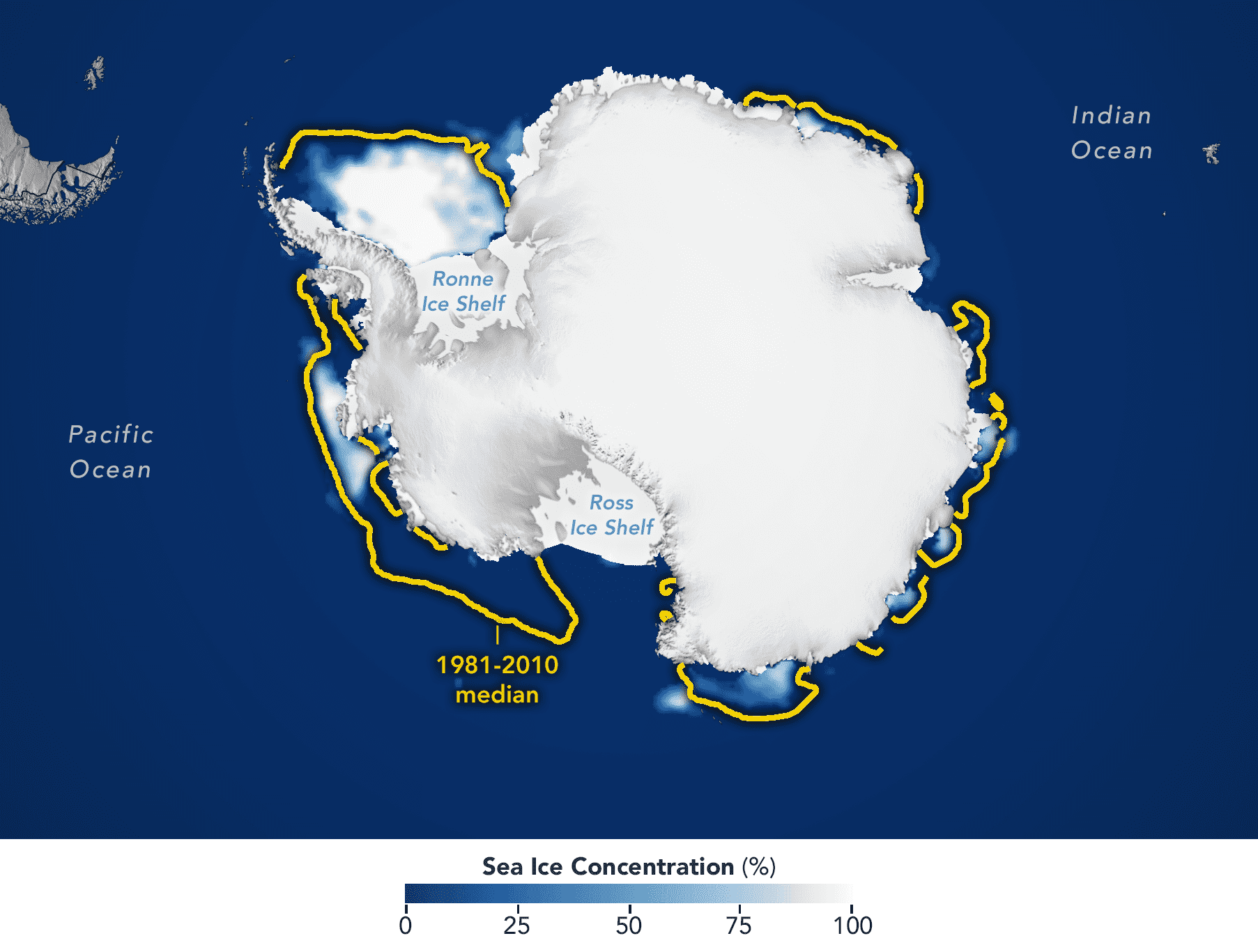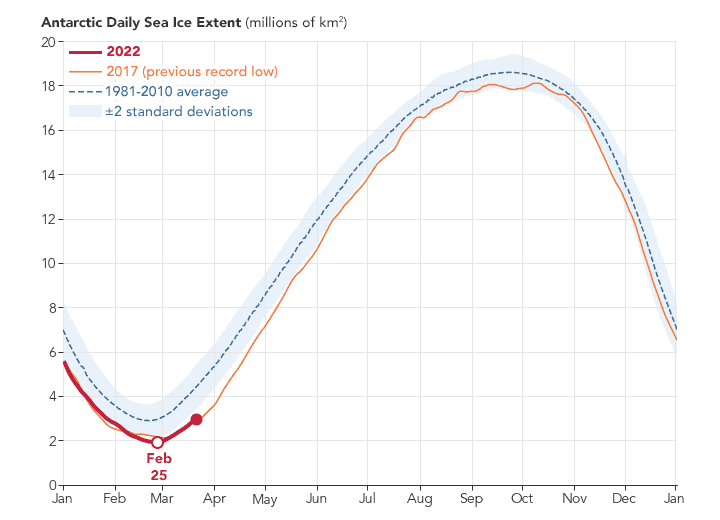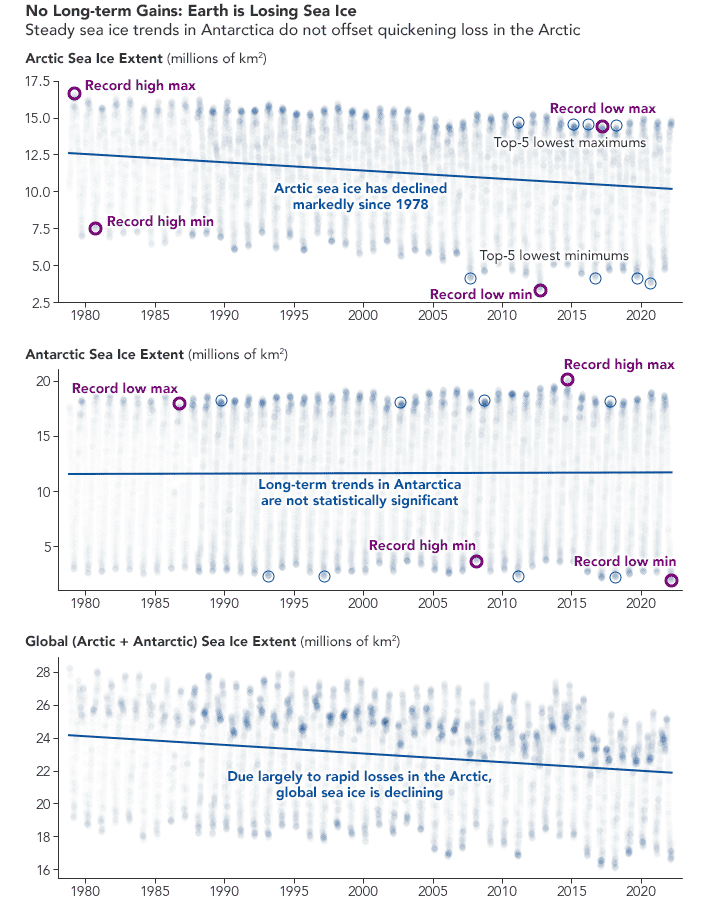
In February 2022, sea ice around Antarctica reached the lowest extent ever observed since the start of the satellite record in 1979. It marks the first time that the ice was observed to shrink below 2 million square kilometers.
Sea ice in southern polar waters reached its lowest extent on February 25, 2022, at 1.92 million square kilometers (741,000 square miles). That’s 190,000 square kilometers (73,000 square miles) below the previous record-low reached on March 3, 2017. Compared to the average minimum, the sea ice this year is missing an area about twice the size of California.
The map above shows the ice extent on the day of its record low. Extent is defined as the total area in which the ice concentration is at least 15 percent. The yellow outline shows the median sea ice extent for February from 1981–2010. A median is the middle value: That is, half of the extents were larger than the yellow line and half were smaller.
Now, one month after sea ice reached its annual minimum, Meier said that the rate of growth looks normal. Even the heatwave that sent Antarctica’s air temperatures soaring in the third week of March does not seem to have slowed the growth. “It is really the ocean temperatures that count,” Meier said, “and a brief heatwave won’t affect things too much in that regard.”
It remains to be seen how much ice will regrow this year. While it is common for Antarctic sea ice to melt nearly all the way back to the coastline during the austral summer, the ice grows unconstrained through autumn and winter. After months of growth (February to September), new sea ice typically spans an area of ocean about twice the size of the continental United States.
In contrast, sea ice in the Arctic shows a clear downward trend. That means that globally, the planet is losing sea ice. “Overall, for the Arctic and Antarctic combined,” Meier said, “the trend is definitely still downward.”
This post first appeared on NASA Earth Observatory. NASA Earth Observatory images by Joshua Stevens, using data from the National Snow and Ice Data Center. Story by Kathryn Hansen.


I have to laugh Dave, you’re parroting a talking point from corporatist sociopaths who couldn’t give the eensy-weensy-teeniest $hit about you, but here you are, doing their work for them. What’s also sadly amusing is your projection, your comment will be the one that people find of incredibly nominal importance. Nice job! Willful stupidity is NOT something to be proud of, sweetie.
…since 1979? Seriously?! I’m supposed to be concerned about a 43-year blip on the tremendously long historical climate record? There are many recorded instances of the earth, or parts of it, being much warmer than now, and colder, and that would include the poles, so I’m not going to stress too much about this one. The information in the article is interesting, but it’s of nominal importance in historical terms. In about five hundred years we can ask people whether this is important or not.